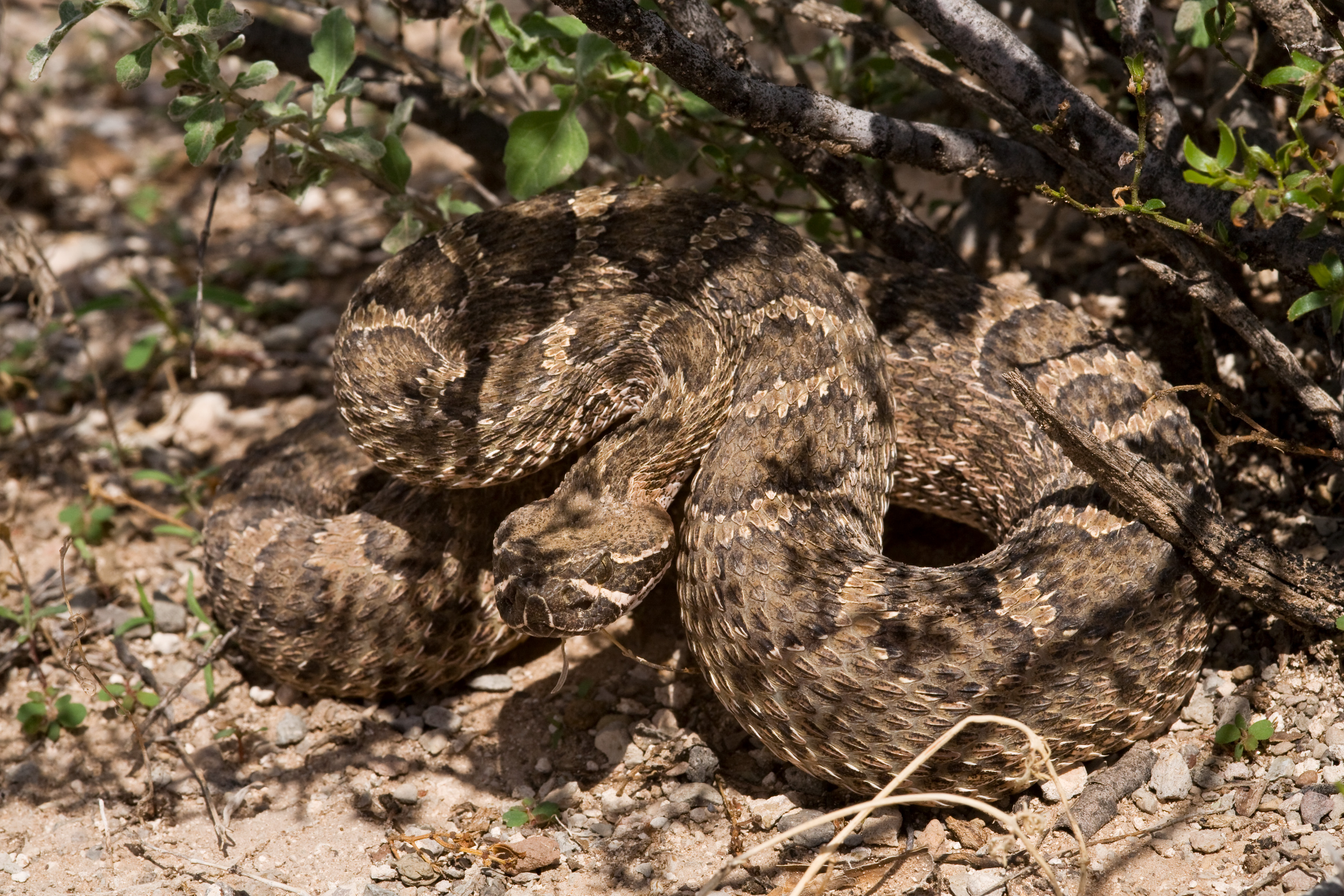Greetings, all.
I suppose I ought to make a “real” post this month and not just a picture of myself looking silly outside. Right now, I’m gearing up for a month or so of more-or-less constant fieldwork doing more rare plant surveys on proposed herbicide treatments for Restore New Mexico, looking for Pediomelum pentaphyllum and Peniocereus greggii. We’ve hired a short-term field crew through the New Mexico Association of Conservation Districts, placing me at least nominally in charge of 9 people. I think we have an excellent crew assembled; the majority even did similar surveys in 2012 and already know what they’re doing! If I’m lucky, they might not notice that I don’t know what I’m doing!
If nothing else, this is an excellent excuse to wander through the desert. You can never have too many of those. Low elevations in New Mexico don’t immediately grab your attention. The tourists (of which there are, generally, not too many) head up to the mountains for the shady cool of pine trees, the occasional stream, and a relative abundance of green and flowers that do not require a microscope. In winter, if we get any precipitation, you can even ski. Personally, I do not ski because the conditions favorable for this activity are generally incompatible with botanizing, but to each their own. However, the low elevations are generally flat, brown, hot, sunny, desolate and, in the words of the immortal Rooster Cogburn, “nothing else grows but has stickers on it”. In my first few years in New Mexico, I viewed it as “drive-through” country–something that must be crossed between me and the mountains. But after a few years I developed an obsession with the flats, driven if nothing else by the simple questions: “Well, where am I? What is out there?” After subtantial investigation: mostly, yes, it is flat, brown, hot, sunny, and desolate. Occasionally, it is cold, green, steep, or cloudy. Rarely, it rains. You might even find interesting plants. If you enjoy solitude and don’t mind a bit of monotony, walking the Chihuahuan Desert offers a kind of sweaty Zen.
Oh, and I have some pictures. First, one of the Restore New Mexico treatments that I scouted the week before last to get a feel for the landscape before we start surveying. The local rancher accompanied me and was baffled by my objectives. “Just seeing what’s out there,” was not on his radar. “Ooh, this spot might have some interesting plants!” was met with, “That’s just a bunch of weeds.” Que sera and whatnot. But the place was wonderful!
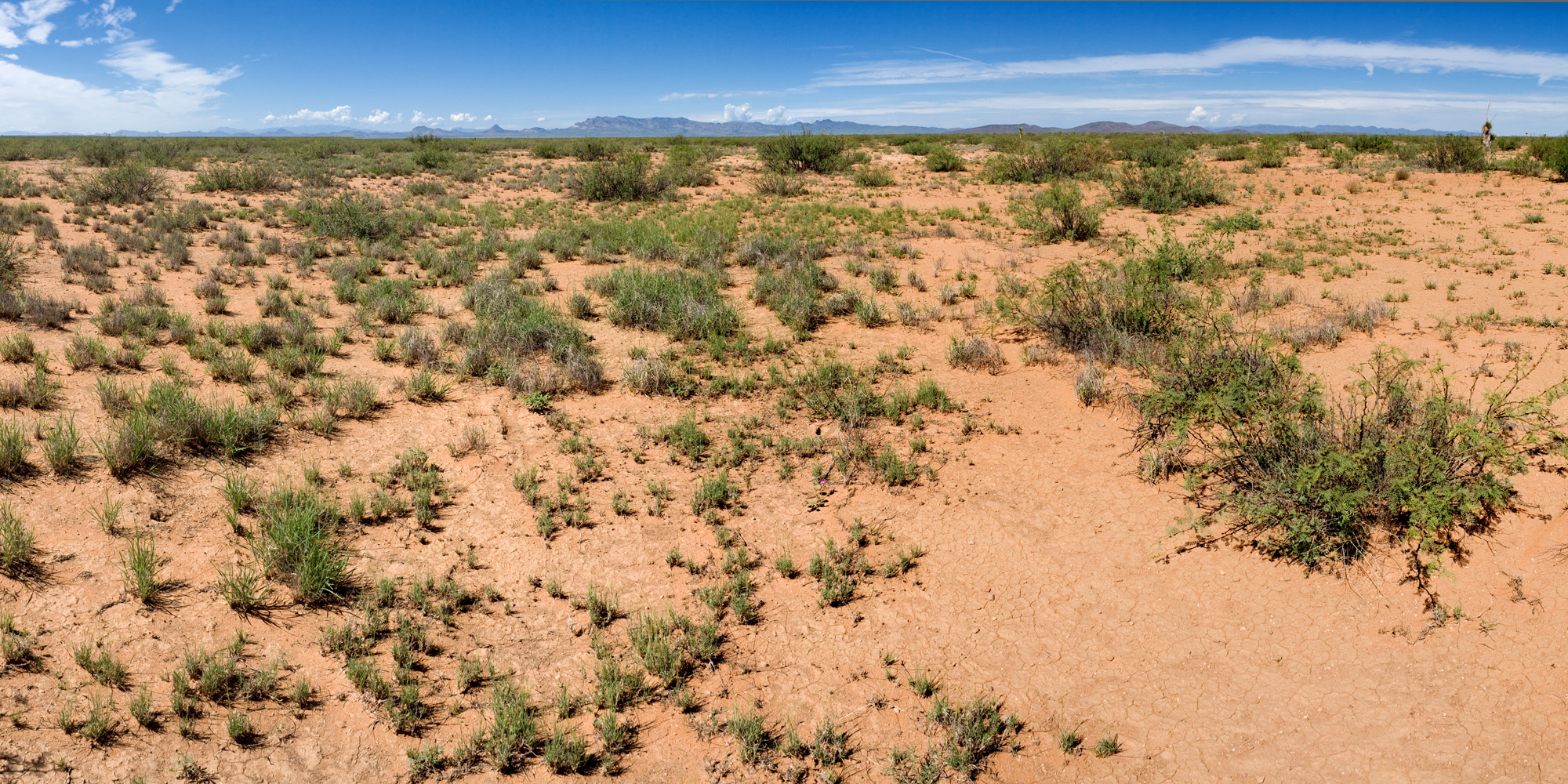
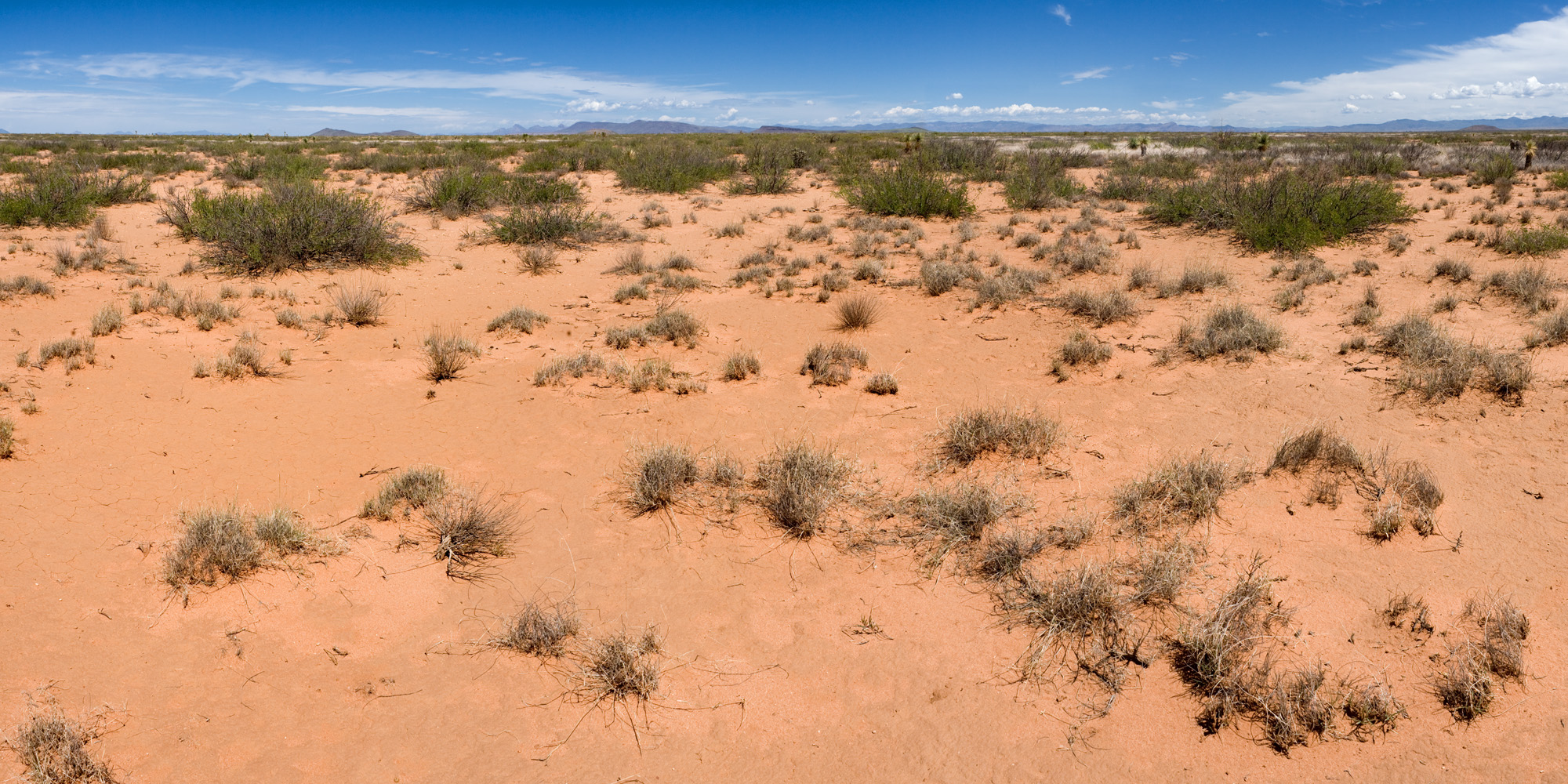
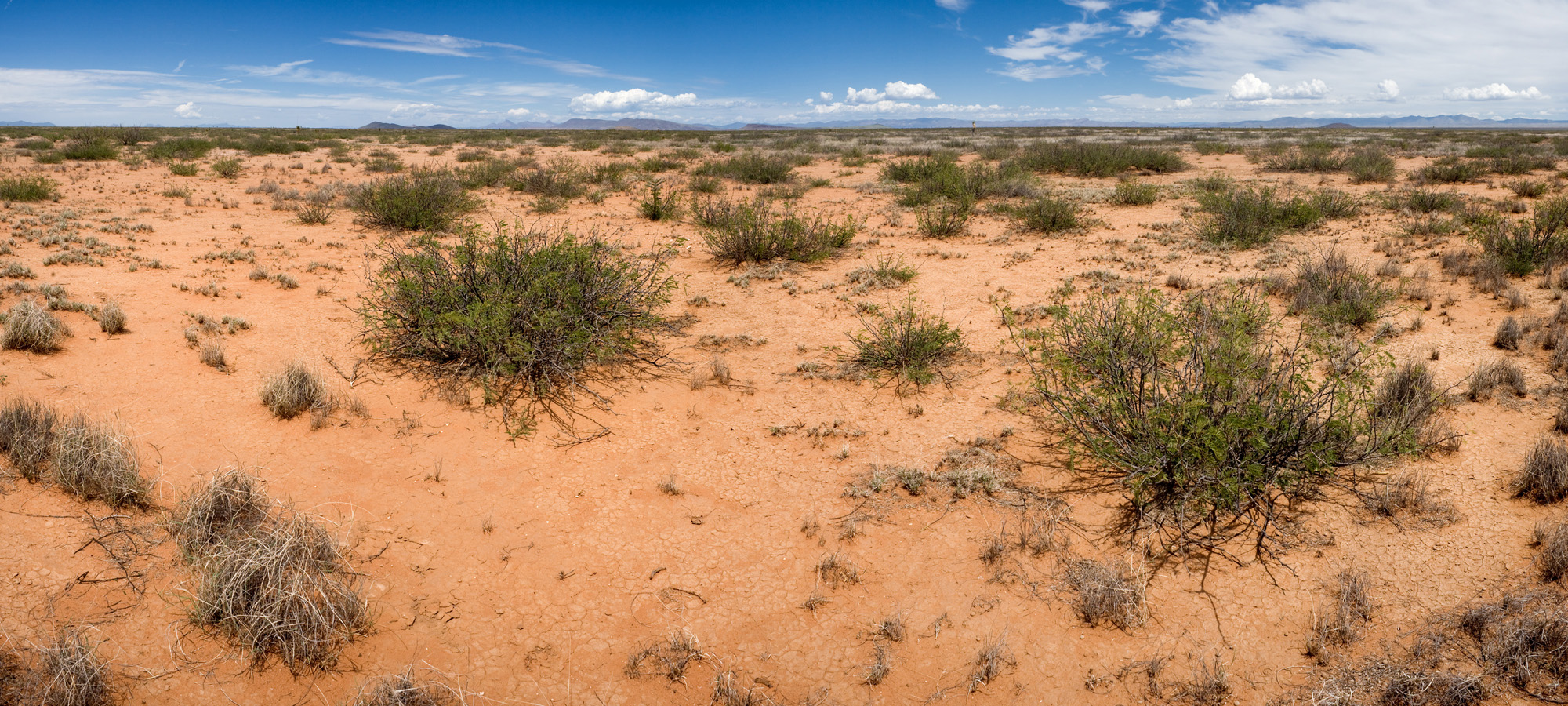
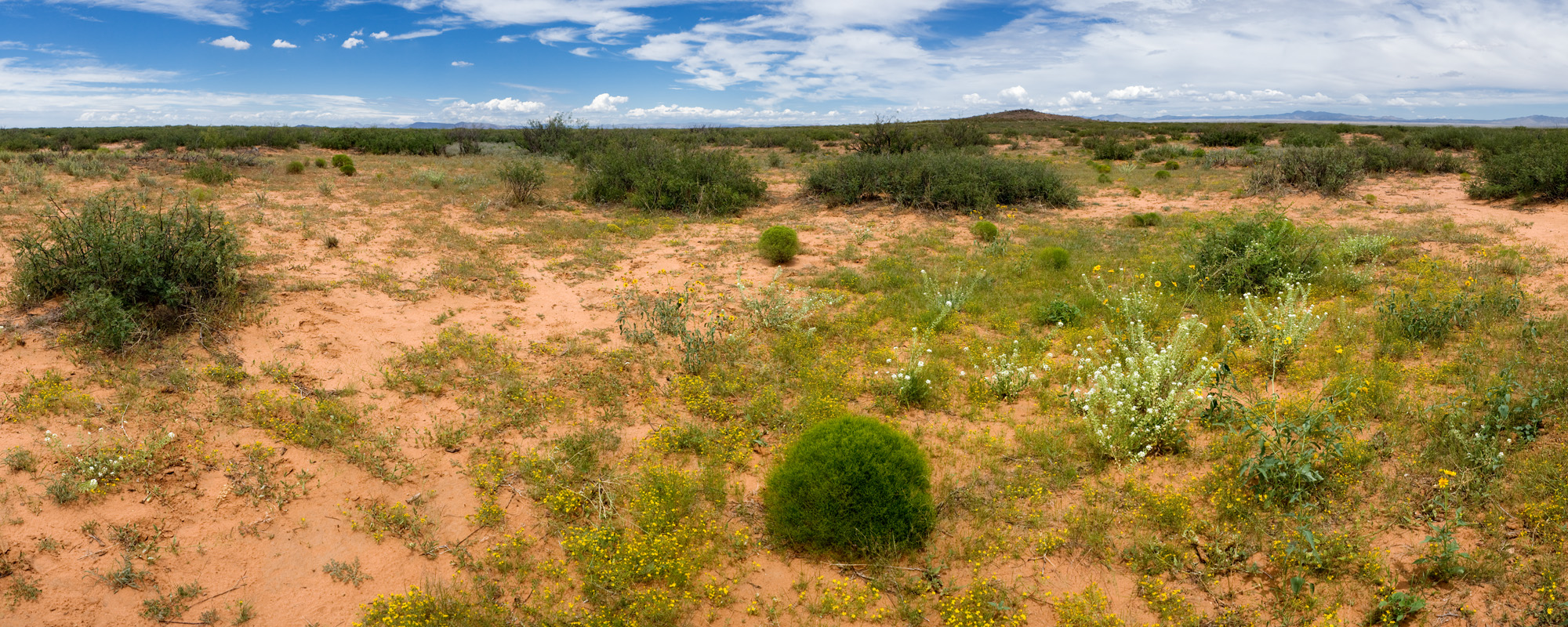
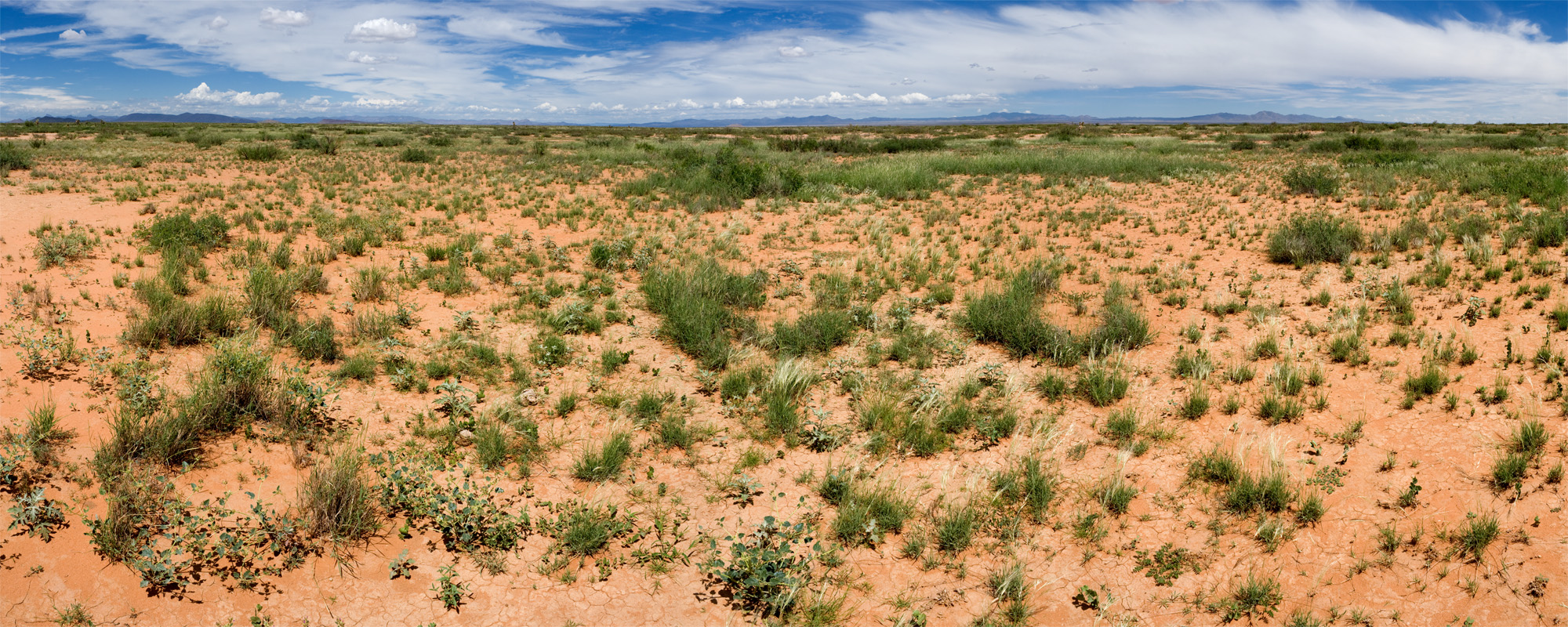
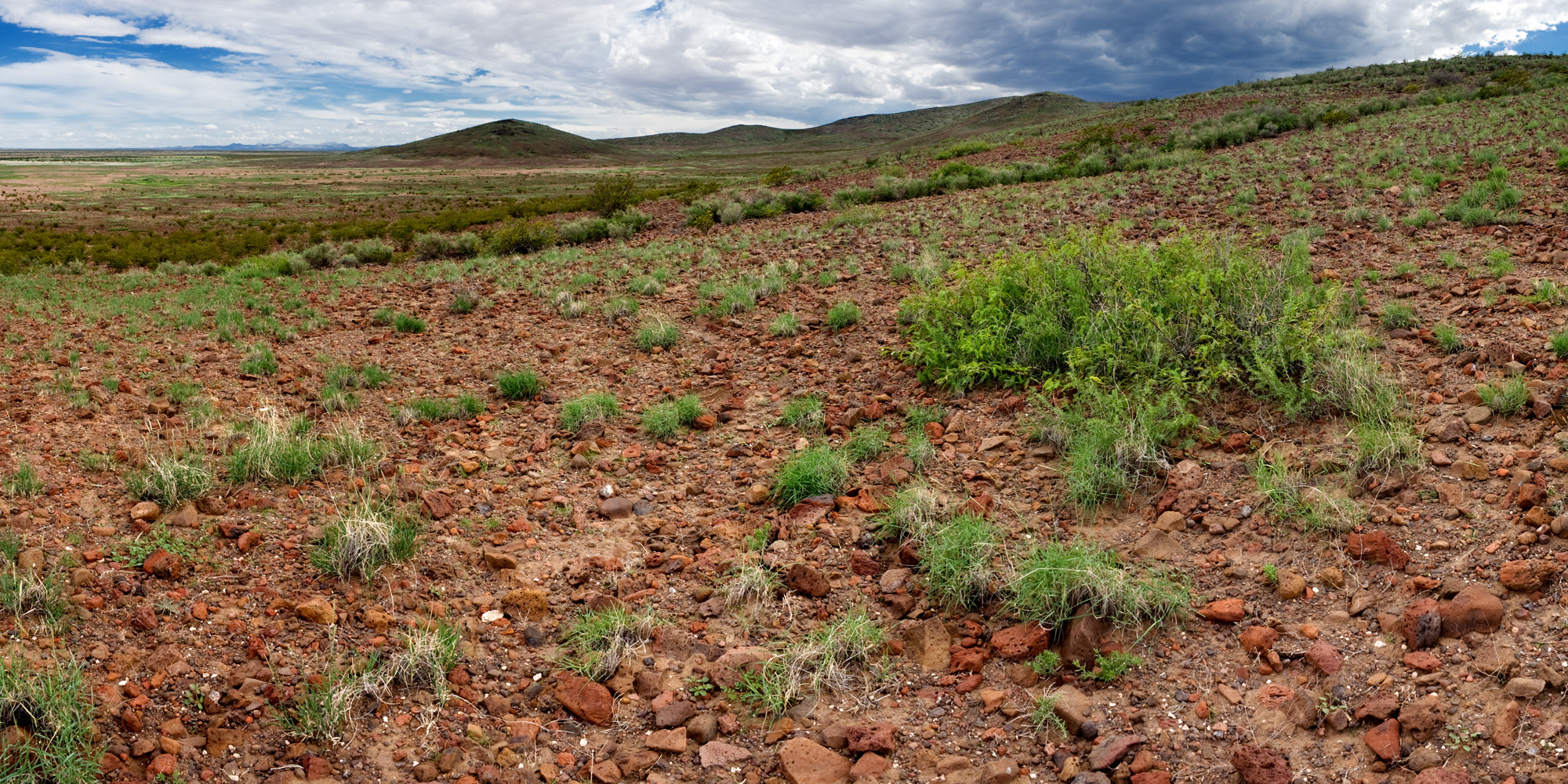
Those familiar with southern New Mexico may be looking at that second photo and thinking to themselves, “Wait… is that Bouteloua eriopoda persisting in sandy soil?” Yes, it is! Black grama used to be the dominant plant in somewhat sandy soils at low elevations but has mostly disappeared after grazing (although it can still be abundant in rockier soils).
Onward to the next adventure; I visited The Rim on the west side of the Guadalupe Mountains with Mike Howard. Here’s what it looks like on the drive in (OK, I took the photo on the way out):
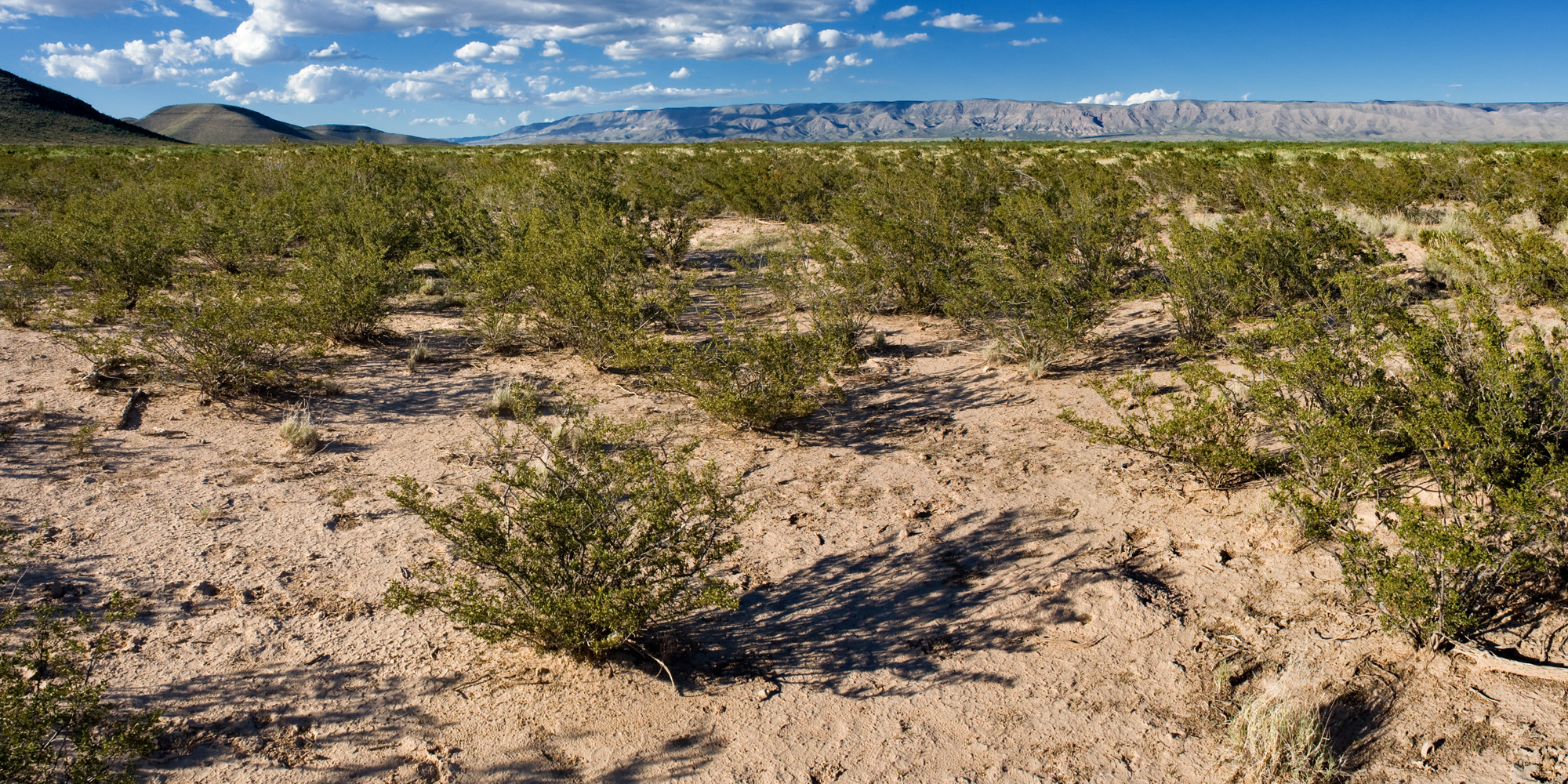
About three fifths of the way across the photograph from the left, you can see some gypsum outcrops. As you draw nearer, the gypsum become more obvious:
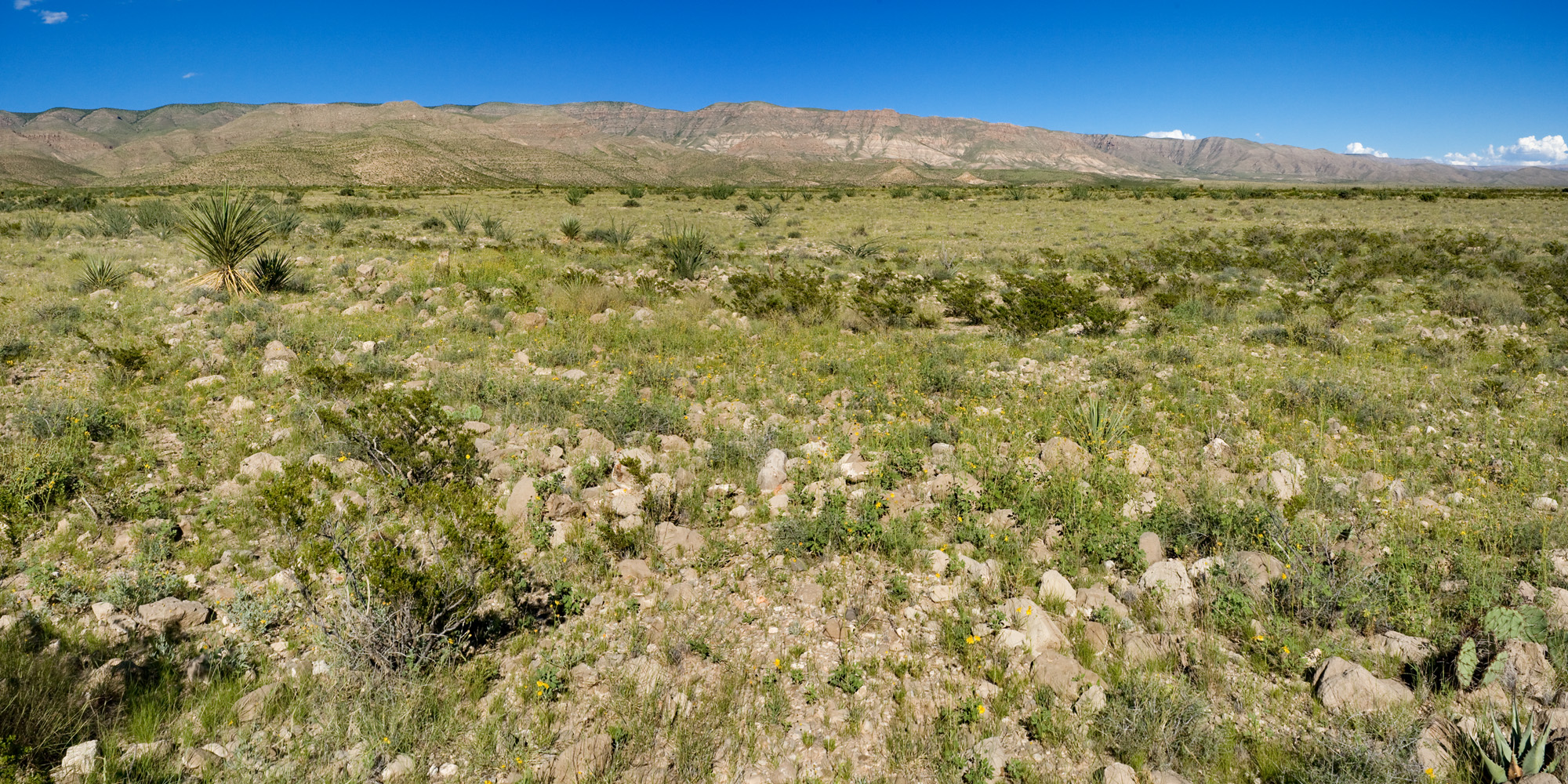
The pale bits that look like they have no vegetation? That’s the goal. Walk in further:
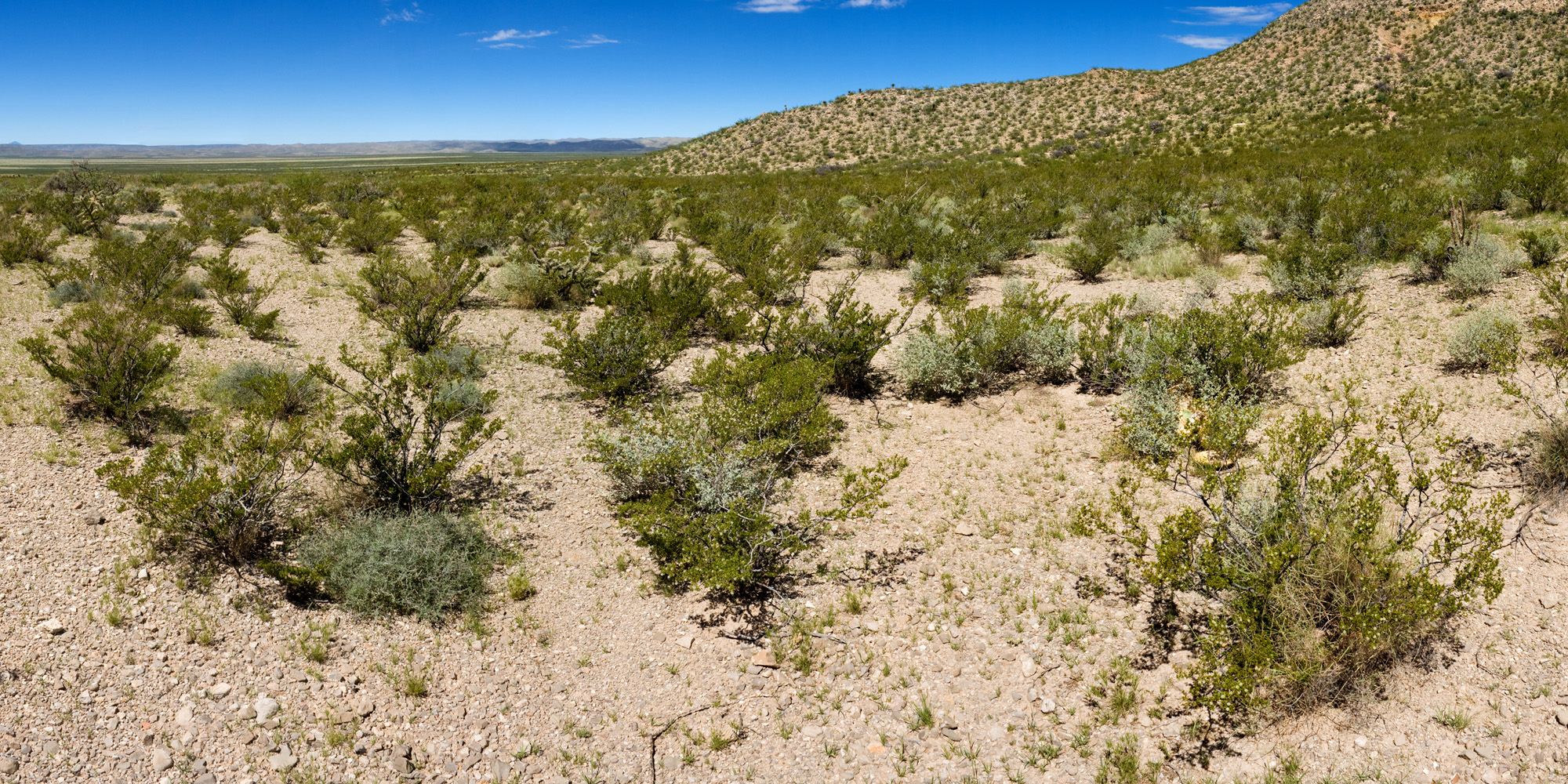
And you find some small outcrops of gypseous clay intermingled with limestone:
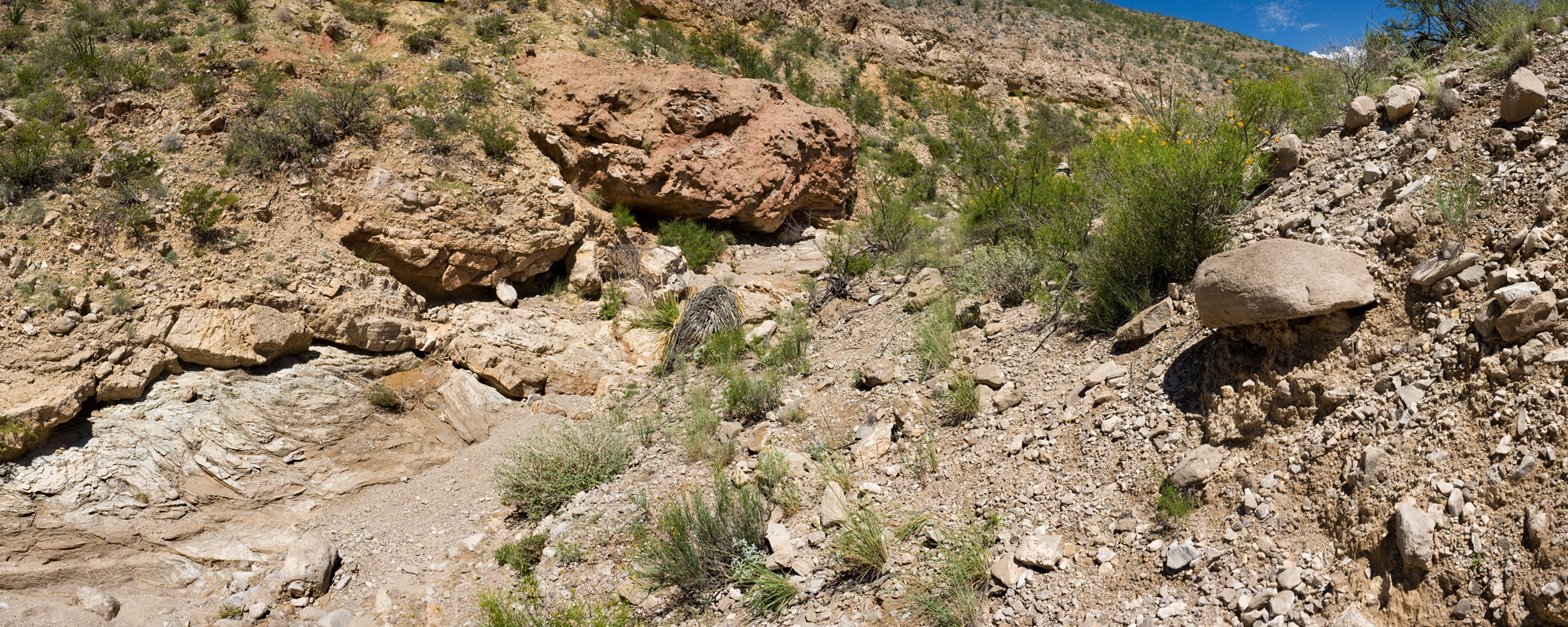
Keep walking.
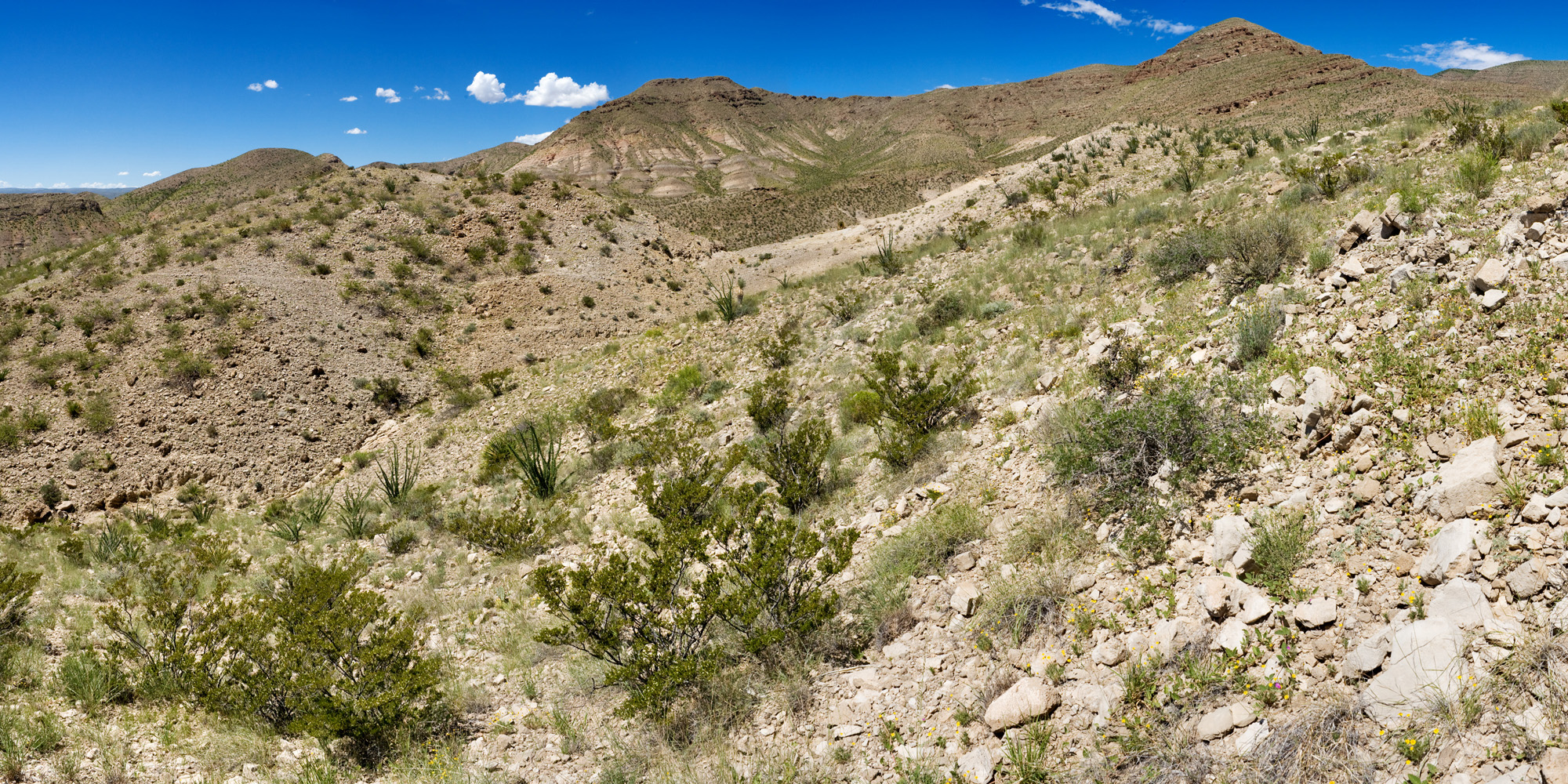
By this point it feels like your brain is about to melt out through your ears. However, you have arrived!
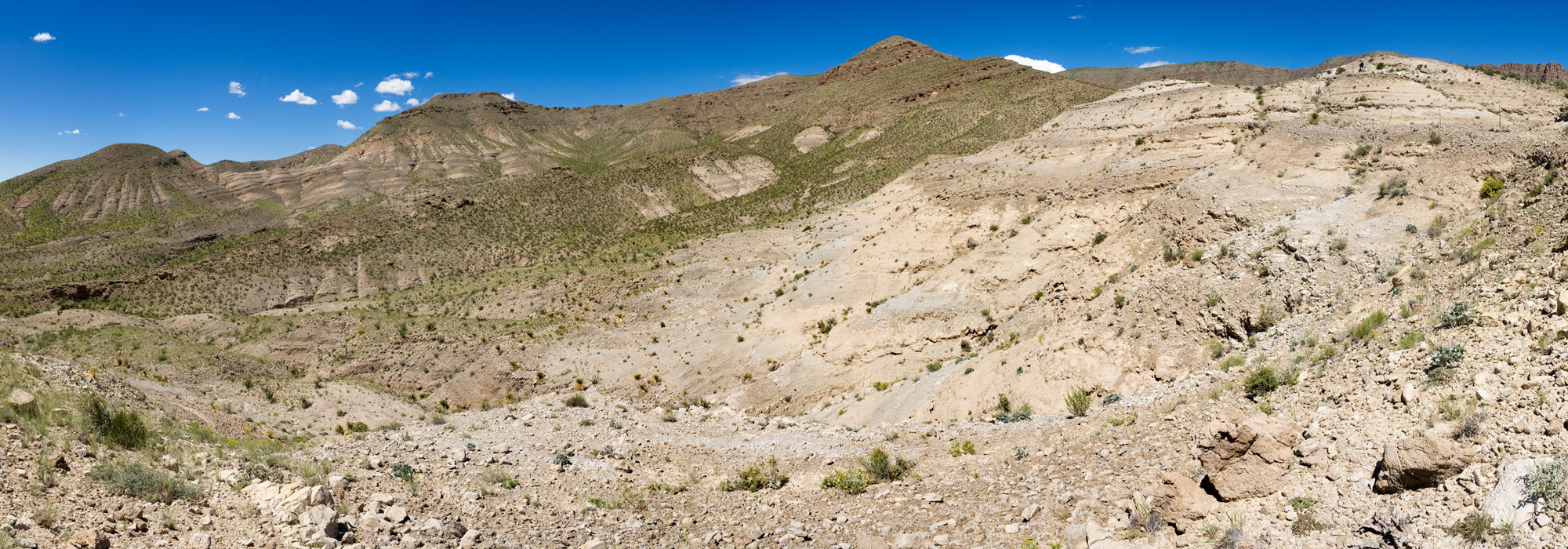
That gypsum may look desolate, but it is the home of three plants found only on gypsum on the rim of the Gudalupe Mountains: Anulocaulis leiosolenus var. howardii, Nerisyrenia hypercorax, and Mentzelia humilis var. guadalupensis. Nerisyrenia hypercorax was discovered only a year ago, and the paper describing it is in press at Journal of the Botanical Research Institute of Texas. As of yesterday, the paper includes this site! In addition to these three gypsophiles, there were two other rare plants in the area: Nama xylopodum and Dermatophyllum guadalupense.
Also, in the last few weeks I found some more Peniocereus greggii:
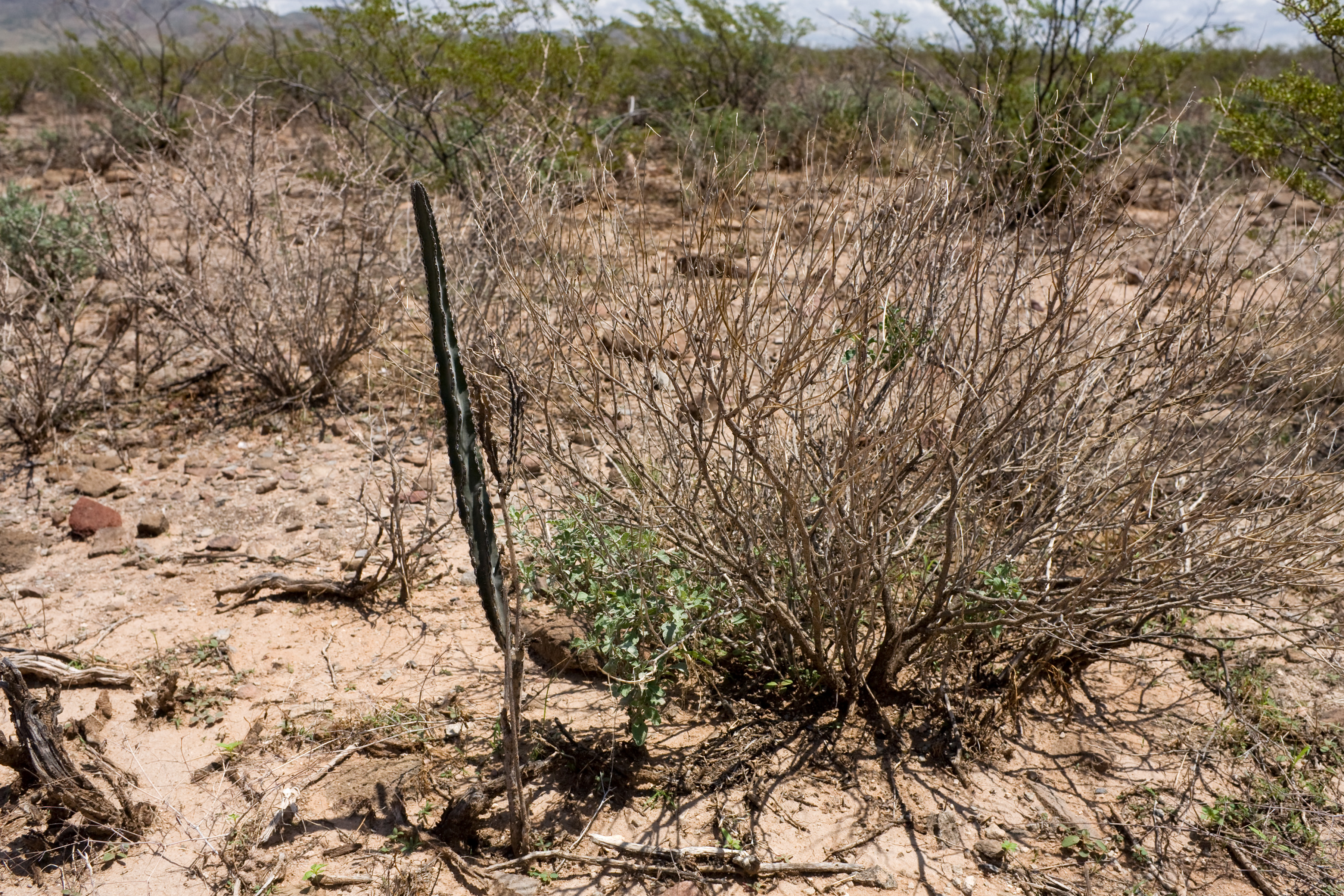
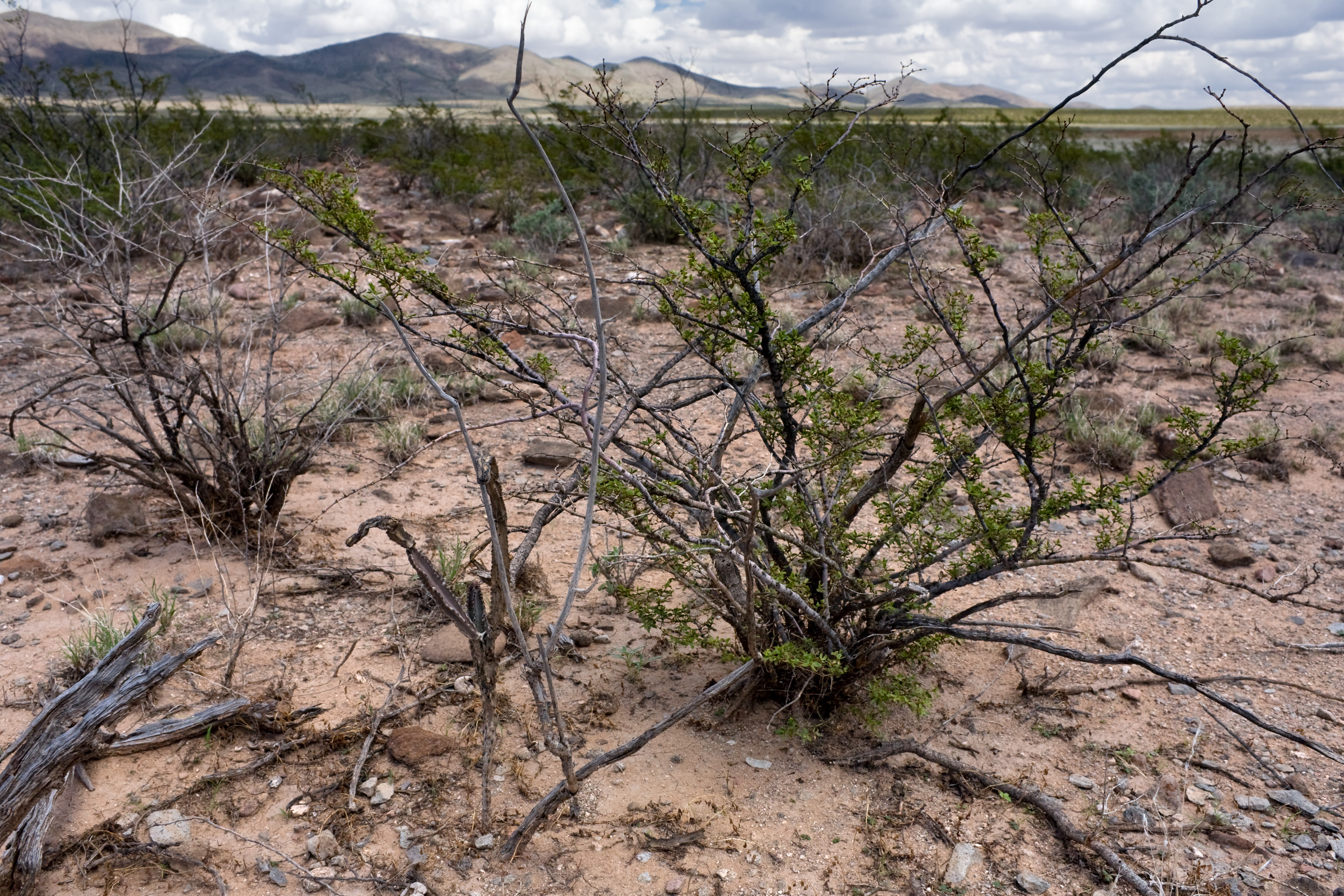
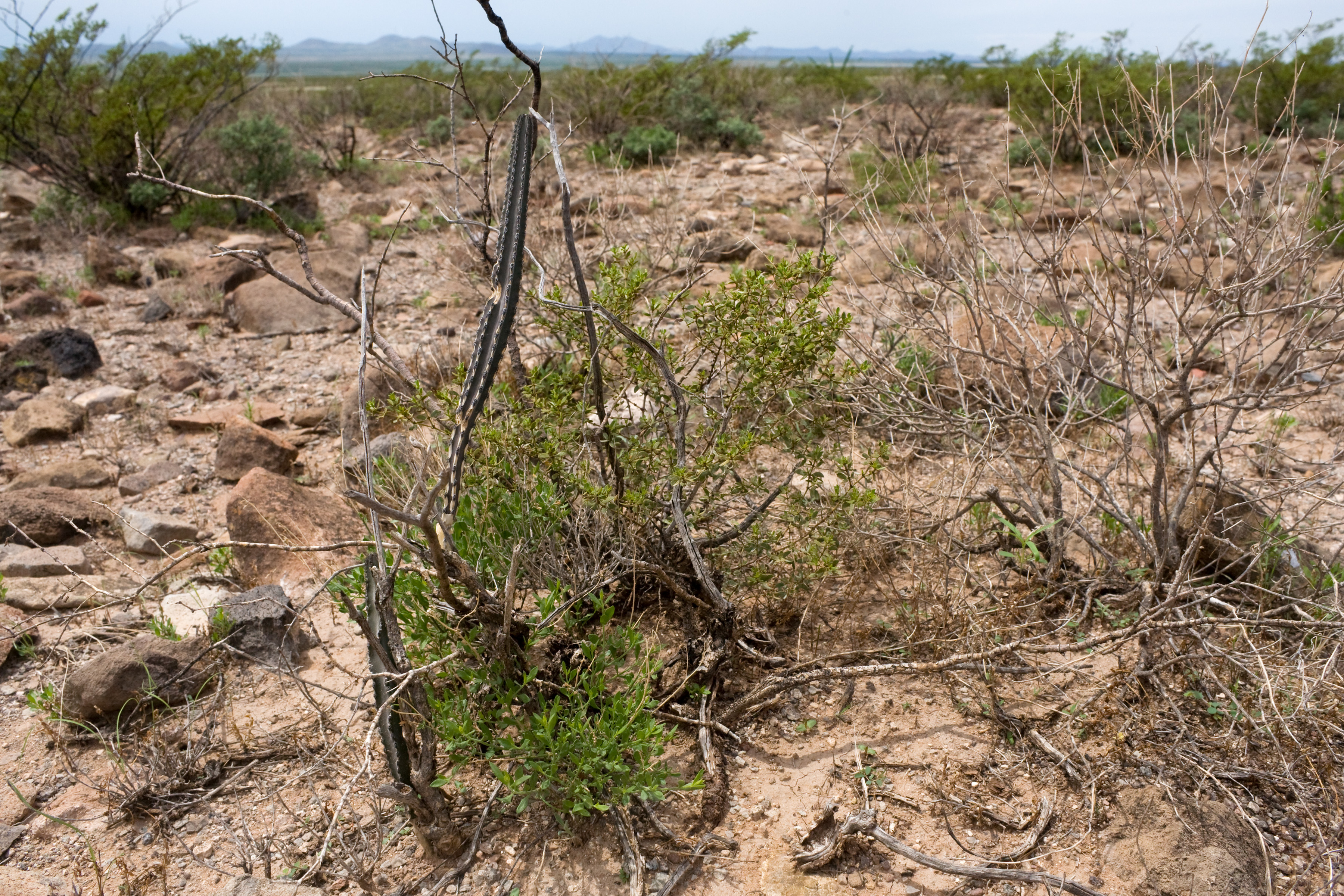
And a cute & friendly rattlesnake (Crotalus viridis):
